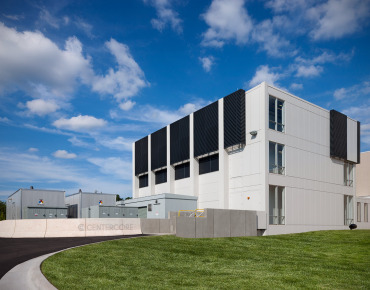Banks Eye Spare Datacenter Capacity

As more enterprises are opting to colocate their datacenters, a new player is emerging in the datacenter industry: the financial services sector.
The financial services sector is becoming "more sophisticated" about its IT infrastructure, Matt Stansberry, author of an annual report on the datacenter industry, said in an interview. "They are looking at the datacenter as a business."
"Colocation providers and financial services datacenter organizations are on similar maturation paths" as banks look to utilize unused datacenter capacity while developing more agile IT infrastructure.
The datacenter industry report published by market researcher Uptime Institute found that overall datacenter spending is up for providers of co-location services and within the financial services sector. Enterprise spending is down. The survey also found that investments in datacenter energy efficiency are hitting a wall.
Colocation services continue to attract the bulk of datacenter spending, the Uptime survey found. Part of the reason is growing demand for datacenter services in areas like healthcare. The other reason, Stansberry added, is service providers "ability to scale and to do it fast."
For example, some are designing new sites in as little as six months to boost capacity while increasing energy efficiency. Colocation providers have "really upped their game over the last five years," he noted.
The Uptime survey also tracked datacenter spending by the financial services sector that is often plagued by overcapacity. Some institutions have even resorted to renting legacy space in their datacenters to increase capacity utilization.
By the time a financial services datacenter reaches full capacity, Stanberry joked, it is obsolete in six months.
The market analyst thinks the financial sector is applying the lessons learned from its heavy investment in datacenters and other IT infrastructure. One response is to boost their IT staff and deploy smaller, modular datacenters. "The banks are really paying attention to efficiency," Stansberry added.
Indeed, recent reports indicate that mutual fund giant Fidelity Investments is entering the datacenter market with a modular datacenter called CenterCore. While deploying the design to its own datacenter in Nebraska, the investment bank is also promoting the modular design as a sort of alternative to colocations services.
The modular design is fabricated in a factory and assembled on premises or offsite in 500 kilowatt increments. The building blocks are designed to withstand an F3 tornado.
The modular approach is being pitched as mitigating the risks associated with single-purpose datacenters.
Stansberry said such an approach makes sense for banks since so much of their business depends on IT flexibility.
Approaches like CenterCore also stress the integration of energy efficiency. However, the Uptime survey found that the return on investment to reduce power usage effectiveness, or PUE, is diminishing. "We're at a crossroads" in terms of squeezing more energy efficiency out of traditional datacenter cooling and heating methods, Stansberry said. The lower the PUE ratio, the better. A PUE ratio of 1.5 is the goal for most datacenter operators. The Uptime survey found that the average PUE ratio for the enterprises it surveyed actually rose in 2014 to 1.7.
Stansberry said further investment in energy efficiency would have to be justified by increases in the IT workload handled by datacenters.
Related
George Leopold has written about science and technology for more than 30 years, focusing on electronics and aerospace technology. He previously served as executive editor of Electronic Engineering Times. Leopold is the author of "Calculated Risk: The Supersonic Life and Times of Gus Grissom" (Purdue University Press, 2016).











